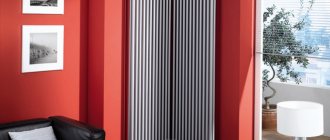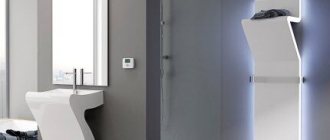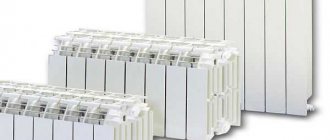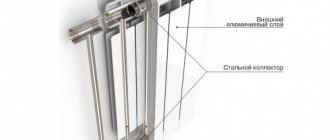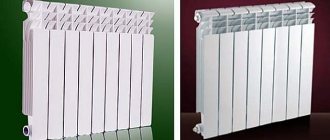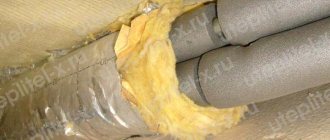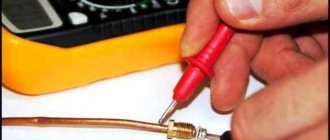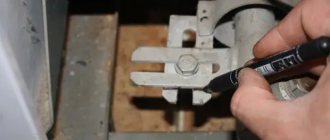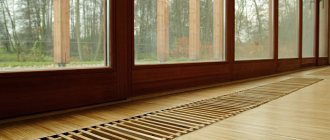When planning a space heating system, you should pay attention to vertical heating radiators, which are selected to suit any sophisticated interior. However, the impressive design of the device is somewhat offset by the considerable price, specifics of connection and operation, which should be understood before purchasing. Do you agree?
We will talk about all types of vertical radiators on the market. The article we propose describes in detail the varieties, their design features and technical characteristics are given. To make it easier for the buyer to solve the problem, we have listed the leading manufacturers.
Why install vertical heating radiators?
It is known: the larger the surface of the batteries, the better and faster the room is heated. As a rule, they are mounted under windows, but it is not always possible to do this.
Vertical heating radiators for an apartment are installed if, for example, the building has panoramic glazing, or the windows are located too low, or there is a narrow section of the wall, and the installation of conventional horizontal heat exchangers will not provide adequate heat transfer.
In these cases, you can “increase” the heat exchanger area upward, that is, use vertical radiators.
In addition, they look very unusual and aesthetically pleasing. Therefore, when choosing water vertical heaters, you should choose heating devices that are not only functional, but also decorative, emphasizing the advantages of the interior.
Features of vertical radiators
The most common is a vertical battery, that is, devices with vertical sections. Horizontal or, as they are also called, high heating radiators are quite rare.
The most successful characteristic can be considered the location of the rectangle, which is formed by the perimeter of the radiator. Batteries whose height of the rectangle exceeds its width will further be conventionally called vertical radiators.
If, after all, by and large, it is wrong to say that such an assessment is accurate, due to the fact that many batteries, even at first glance, do not fit the description as vertical; they can be described much more accurately as “high”.
In simple terms, there are no strict and clear boundaries; it is mainly recommended to rely on your own visual perception.
But this criterion is not strictly fundamental, since technically horizontal and vertical heating radiators are quite similar in their main characteristics.
But in terms of operational properties, there may be some nuances that will determine the main positive or negative properties of vertical heating radiators.
The main advantages include the following characteristics:
- Saving space in rooms. Vertical radiators of the required thermal power can be placed even in the narrowest free space of the wall.
- This type of radiator makes it possible to distribute heat to its entire height, which can reach almost human height, which provides some advantages in ensuring the convenience of people staying in the room where devices of this type are installed.
- None of the heating devices has such a wide, without any exaggeration, range of different external designs and configurations. You can choose the highest model with a wide variety of designs - tubular, panel, sectional, etc.
- Batteries of this type, in addition to the main thermal purpose, quite often also have additional functions. Their size, design and configuration quite often make it possible to turn them into clothes and towel dryers, furniture elements, interior partitions, decorative panels, wall mirrors and much more, which can be very useful in everyday life.
But the vertical heating device is not without its disadvantages:
- One of the methods of heat transfer, and more specifically convection, is used quite irrationally by such radiators - a so-called “thermal cushion” remains under the ceiling, which creates an obstacle to faster natural circulation of air flows. The interior space of the room does not warm up very evenly, despite the fact that the temperature at the top is higher, which is why the level of comfort drops. But this also creates unfavorable conditions for the spread of dust, which is a very significant advantage.
- These vertical batteries are perhaps the most vulnerable part in terms of the formation of air jams in the internal channels.
- There are also some difficulties during installation, this relates to the evenness of their location on the wall. Even with the slightest deviation of just half a degree from the vertical it will be visible. Another problem is the laying of heating circuit pipes. The use of the most effective diagonal supply and return scheme is quite problematic due to the fact that the pipes will either need to be embedded in the walls at long intervals, or they will spoil the interior with their appearance. In this case, you have to use the bottom connection, which is not as optimal in terms of efficiency of heat energy use as the diagonal circuit.
- Also, the disadvantages include the massiveness of most batteries of this type, especially after filling with coolant; installation also leaves a rather serious mark due to the need for reliable fastenings that come with radiators. It would not be amiss to mention the price, which is much higher than that of conventional heating batteries.
As mentioned earlier, the design of vertical batteries is not fundamentally very different from standard ones.
Source: https://about-air.ru/temperatura-vozduha/nagrev-vozduha/vertikalnyj-radiator-dlya-kvartiry.html
Connection type
The most common is the bottom connection . Installing the radiator in a vertical position with such piping is not difficult, but the installation of the pipes will take place inside the wall or covered with a decorative box. All this leads to higher construction costs.
Lateral connection is used much less frequently . It does not give much effect due to the fact that the coolant is not completely removed from the radiator and can remain there even in summer. This affects the durability and quality of the device.
The most effective is considered to be a diagonal connection, which has an upper input and a lower output.
Radiator dimensions may vary. This value does not have a strict standard. The height of the device is in the range of 0.3−6 m, and its width is in the range of 0.3−3 m. Multilayer devices are sometimes produced.
The main types of vertical heating radiators for apartments
Despite the diversity of the range, only three main types of radiators are produced, which, in turn, differ in numerous designs, thermal power and sizes.
Sectional
They are prefabricated structures. If necessary, some sections can be added, removed or replaced. Inside each of them there is a vertical channel for coolant circulation, and outside there is a steel plate to increase the heat transfer area.
They are neat, suitable for many styles, have a relatively small mass, can be up to two meters high, and are inexpensive. However, they are only suitable for use in autonomous heating systems with stable pressure and controlled temperatures.
Panel
They consist of neat thin panels that are made from two stamped sheets of metal. When they are connected, internal vertical channels are formed through which coolants circulate.
There are different designs: from 1 to 3 connected panels. Most models are equipped with convectors (thin corrugated metal plates) to provide additional heat transfer, of which there are from one to three in one radiator. They are also available without convectors.
Tubular
They consist of non-separable pipe sections connected by welding at the bottom and top to the collectors. These vertical radiators are the most common.
They are produced with a different number of sections and come in the most bizarre shapes (tubes not only round, but also with a square cross-section, with wavy bends, intersecting, etc.).
These designs are the most reliable, resistant to pressure changes, and safe due to the absence of sharp corners. But they have low heat transfer, so constant support of coolants is required, which reduces savings. Welding seams are vulnerable to sudden changes in pressure.
Types of vertical heating devices
When choosing vertical batteries, keep in mind that they differ in various parameters, so the selection process can take a noticeable amount of time.
Features of heating systems
First of all, heating devices are divided according to the methods of heat supply, these are:
- water;
- electrical;
- mixed.
Vertical radiators with water heating system
Water systems heat a room in the standard way - through the use of hot water. Wall-mounted models of such heating devices are the most common and popular because they are much cheaper than radiators operating on other principles. If you decide that a water heating system is right for you, then be sure to purchase only those models that have an anti-corrosion coating. It significantly extends the life of batteries.
Heating systems powered by electricity
Heating systems powered by electricity are more convenient to use. But due to direct contact with the electrical system of the room, radiators of this type cannot be installed in places with high humidity. Electric batteries are absolutely not suitable for kitchens and bathrooms. Electricity is an expensive source of energy, so it is worth considering that utility costs will increase significantly.
Mixed type radiator
If for some reason you have to periodically face a loss of hot water or light, it is best to purchase mixed-type radiators. They work from both sources, so you won't get into trouble in case of a planned or emergency shutdown of one of them.
Material selection
The main feature that allows us to classify vertical radiators is the source material from which each of the products in question is made. In accordance with this criterion they are:
- made of cast iron or steel;
- aluminum;
- bimetallic;
- based on copper and plastic (extremely rare).
Cast iron batteries
Heating radiators made of cast iron are classic models that were widespread in past centuries. They are still in demand among consumers, which is explained by their following advantages:
- product strength;
- relatively low price;
- durability.
On the other hand, this material has a number of significant disadvantages, which forced manufacturers to master the production of modern samples based on more “advanced” materials:
- difficulty of installation due to the significant weight of the mounted systems;
- fragility of cast iron material, inability to withstand impact loads;
- low thermal conductivity, forcing an artificial increase in the temperature of the coolant.
If you need to heat cast iron batteries to 45 degrees, the water temperature in them will have to be raised to 70 degrees. As a result, there is an overconsumption of energy resources, which is especially noticeable during the heating season in private suburban buildings.
Therefore, for a private consumer, the problem of economy is decisive when choosing a material for a heating device.
Steel radiators
Characteristics:
- Heat dissipation – 1200–1800 W;
- Working pressure indicator – from 6 to 15 atmospheres;
- The hot water temperature is 110–120 C.
- Steel thickness is from 1.15 to 1.25 mm.
Advantages:
- Low inertia. The steel heat exchanger heats up very quickly and begins to transfer heat to the room
- Increased heat transfer through thermal radiation and convection
- Long service life thanks to simple design
- Ease of installation
- A light weight
- Low cost
- Attractive appearance, original design. Steel are manufactured in various shapes, allowing them to be placed vertically, horizontally and at an angle
- Compatible with a variety of fastening materials
- High level of energy saving
- Installation of temperature controllers
- Simple design allows for easy maintenance
Flaws:
- Low corrosion resistance. Units made from the thickest steel can withstand a service life of no more than ten years.
- You cannot leave it inside for a long time without water, which is not suitable for central heating.
- Inability to withstand strong water hammer and pressure surges, especially in weld areas.
- If the outer coating was originally applied with flaws, it will begin to peel off over time.
Models of steel radiators differ in the type of connection - it can be side or bottom. The bottom connection is considered universal; it is discreet in the interior, but more expensive.
Depending on the number of panels and convectors, or internal sections, there are several types.
Type 10 has one panel without a convector, 11 has one panel and one convector, 21 has two heating panels and one internal section, and so on, by analogy, types 22, 33 and others are divided. Three-panel heat exchangers are quite heavy, heat up more slowly and require more complex maintenance.
Bimetallic models
Among the currently popular options are the so-called bimetallic vertical radiators, a feature of which is the use of two metals. The inside of the appliances is steel, the outside is aluminum with an enamel coating.
In appearance, they resemble equipment made of aluminum, but differ markedly from it in technical parameters.
The list of advantages of using such models includes:
- corrosion resistance due to a special internal coating;
- stylish and original appearance (especially for models with mirror panels or design in the form of artistic panels), allowing the device to be installed in rooms with any interior;
- no need for special staining;
- simple installation and the presence (in most cases) of a thermostat that regulates the room temperature and reduces heating costs.
There are practically no disadvantages to bimetallic vertical radiators. The main thing can be called the high cost, due to which their popularity is lower compared to steel, aluminum and cast iron models.
In addition, for normal operation of the equipment, high pressure must be constantly maintained in the autonomous heating system of a private house.
Aluminum heating radiators
You can start right away with the main vulnerable feature of aluminum radiators - they are very demanding on the quality of the coolant, so they are recommended to be installed only in autonomous systems of apartments and private houses.
In conditions where the chemical composition of the coolant and the degree of its purity cannot be controlled, such batteries will not last long.
For autonomous systems, this type of radiator is quite popular, as it has many positive characteristics, has a presentable appearance and, in addition, is affordable.
If the operating rules are properly followed, manufacturers guarantee trouble-free operation of these heating elements for up to 20 ÷ 25 years. This is exactly the period of their operation that is indicated in the passport, and since the minimum time is usually set there, one can assume that the battery can last much longer.
Aluminum batteries are designed for coolant heated to 90 degrees, withstand a system pressure of 17-18 bar, and have an enviable heat output - up to 210 W, while the internal volume of the section of this type of battery is 450 ml, and the weight is only 1.5 kg.
The number of sections can be changed depending on the area and degree of thermal insulation of the room.
The figure shows the connection of individual elements into a single structure. The most popular are batteries with an interaxial distance of 500, 350 or 200 mm. There are also high vertical options, reaching 1500 -2000 mm.
You definitely need to know the negative and positive qualities of this type of radiator.
- The advantages of this type of battery include high heat transfer, ease of installation, cost-effectiveness, decent design, and convenient sizes.
- Experts attribute the negative aspects to the fact that the main heating occurs along the ribs of the sections. The possibility of gas formation in certain areas cannot be ruled out, which often leads to internal damage. In addition, if all existing installation rules are not followed, leaks may occur at the connections.
The solution to the problem with internal gas formation will be to install an automatic air vent on each of the batteries, which will work if necessary.
Depending on whether the radiators underwent special treatment at the production stage, they may have anti-corrosion protection or be produced without it.
When choosing, you should definitely take an interest in this factor - there are radiators made of highly purified aluminum that have undergone anodization, which protects the structure of the material from corrosion.
Such batteries are able to withstand pressure of 65-70 bar and have higher heat transfer than those that have not undergone such treatment.
Source: https://remont-system.ru/radiatory/preimushchestva-i-nedostatki-vertikalnyh-radiatorov-otopleniya
Battery in a niche: why is it needed and how to do it yourself
Read in this publication: Battery in a niche: advantages and disadvantages of such an installation Niche for a battery: important points in the manufacturing process How to make a niche for a battery under a window: step-by-step instructions A few more subtleties of installing a niche with your own hands
Aesthetics and once again aesthetics - this is precisely the goal that any person pursues when making home renovations. For this reason, it is very important to pay attention to the various little things that make up the overall perception of the room - even carefully laid heating pipes can ruin the appearance of the room. By and large, this is the main reason why a battery in a niche is found in almost every second modern apartment or house. As a matter of fact, we will talk about it in this article, in which, together with the site stroisovety.org, we will talk about how to make a battery in a niche with your own hands.
Niche for battery photo
Battery in a niche: advantages and disadvantages of such an installation
Oddly enough, there are practically no negative aspects to this technology of heating radiators. Therefore, let's start directly with the positive aspects, which include the following nuances.
- As mentioned above, this is primarily a neat appearance of the wall surface under the window sill, where batteries are traditionally installed. No pipes or anything else spoils the appearance of the room, since they are placed under the wall cladding - only control valves remain near the heating radiator and nothing more.
- The second point is directly related to the need to create a false wall in which a niche is cut. Since heating pipes fit there, why not other communications, and at the same time insulation? By the way, this moment is the root cause of the formation of niches for the battery - by insulating the wall, it suggests itself.
- And it suggests itself because its absence will take the battery outside the window sill, which is not good either from a practical or an aesthetic point of view.
- In addition, making niches for radiators means saving yourself from the need to cover heating devices with various kinds of screens, which reduces their ability to heat the room.
Battery in niche photo
What size of wall-mounted water heating radiator to choose
If we talk about the dimensions or dimensions of vertical radiators for an apartment, then they are less limited. Horizontal type batteries should be placed in a niche under the window. There are certain requirements that are important to comply with in order to have maximum thermal output.
Popular height formats range from 1200 – 1500 and up to 2000 mm. Large panels are used in rooms with high ceilings and specific “concrete jungle” rooms:
- loft apartments;
- apartments with panoramic views;
- housing with “French” windows (low window sill);
- apartments with hinged balcony doors with glazing.
Vertical wall-mounted thermal units have fewer format restrictions. Of course, compact designer panels are easier to integrate into interior design. But tall and deep models give off more heat, provided that they are not dirty and connected correctly.
Flaws
There are not very many negative indicators, but they are significant.
The price of the product and all components is noticeably higher than tile systems. This has a particularly negative effect when ordering serial collections. Buying a designer vertical radiator is approximately 5 times higher than the cost of an ordinary horizontal battery.
It is better to install radiators of this type near the floor, since the main part of the heated air will rise to the ceiling.
Diagonal connection, when external pipes are used, looks very ugly. They need to be hidden under a box or inside a wall. All this requires large additional financial investments.
How to choose a vertical radiator based on its thermal power
Heating devices made from different metals have different heat capacity indicators, and the efficiency depends on their shape. Therefore, it is important to take into account not only external parameters, but also all these relationships when choosing one or another vertical model.
Note! The technical description for each product indicates the thermal output. The ratio of calories supplied must match the footage or volume of heated air in the room.
In some cases, it is necessary to combine horizontal and vertical batteries to provide full heat.
These are corner rooms in houses without external insulation with an open loggia. An additional vertical block behind the balcony door, as in the photo, will add warmth on cold winter evenings.
Important! To carry out the most accurate calculations of the ratio of heating devices and battery format, there are special formulas and computer programs. They include all coefficients and amendments regarding footage, climatic conditions of the region and other housing parameters.
In what cases are they used?
Vertical radiators are used for panoramic glazing.
Taking into account the characteristics of vertical-type heating devices, it is preferable to use them in the following cases:
- you need to save on space in small rooms (including loggias combined with a room);
- it is necessary to heat areas with panoramic glazing that occupies a wall from floor to ceiling;
- in rooms completely devoid of windows: in bathrooms, hallways or small dressing rooms.
In addition, they can be used as a decorative element of the interior when arranging a living space.
It is important to consider situations when a vertical wall-mounted radiator is not suitable for installation and operation in specific conditions:
- the owners plan to install radiators on walls (interior partitions) made of plasterboard blanks without additional reinforcement;
- with insufficiently insulated external walls;
- in low rooms, the small volume of which makes air convection difficult.
In most situations, vertical radiators are purchased with the aim of creating a unique design in the house, despite the significant costs of purchasing them.
Features of installing high radiators
Connecting batteries of any format has a lot in common, regardless of the model type. Connection to the heating riser is made in different ways:
- diagonal (most effective);
- lateral (standard);
- bottom connection.
Helpful advice! Before purchasing, it is important to make sure what type of connection this model will correspond to.
Vertical panels are usually connected from below, but, if possible, it is better to weld the pipes to make a diagonal coolant supply. It will ensure the most efficient filling of the battery with warm water before returning to the return line.
With a lower connection, all recommendations remain the same as for horizontal cast iron accordions. But vertical models have one feature - the water pressure in the system should be enough to fully fill the heating equipment.
Source: https://birzhaplus.ru/vertikalnye-radiatory-otopleniya/
Heat source
This equipment is also divided according to the source of coolant. There are two types. The first includes water that heats the gas boiler. In this case, such devices are called vertical water heating radiators.
The second type includes a coolant equipped with special oil. In this option, electricity is used to heat the heating devices.
- The latter option, compared to the first type of heat source, is more expensive for the family budget.
- Therefore, they are not particularly popular and are used more as an additional or temporarily replacing the first source of thermal energy.
Thanks to the built-in thermoregulation system, which allows you to use an electric radiator when the temperature drops.
Products from different manufacturers
Manufacturers are developing new types, trying to improve the equipment. This is due to the great demand for vertical radiators, despite their high cost. The most famous brands offer products with the best characteristics:
Kermi
The German company presents batteries with an original design that are suitable for any room. Devices are manufactured with one or more bends, which contributes to a sufficient level of heat transfer.
Vertical radiators are installed in residential and administrative premises. Thanks to the new Therm X2 technology, the front and rear panels are linked in parallel. In this case, the coolant fills them simultaneously.
As a result, the radiator heating time is reduced by 25%. The corresponding adapters provide a wide choice of thermostat heads. Lacquer finish with a two-layer coating that does not emit harmful substances when heated.
Arbonia
Vertical type batteries with top and bottom connections from a Swiss manufacturer. Steel tubular and sectional types are suitable for heating residential and administrative premises. They are characterized by high performance and good heat transfer.
Work with media up to 180 °C. The outside of the material is treated with three-stage cleaning, primer, and coated with durable enamel.
An interesting solution from the manufacturer is to produce closed-shaped radiators, in the center of which there is a mirror surface, and on the side parts there are hooks for clothes. This approach allows you to add an unusual functional and design touch to the interior of the hallway.
Zehnder
A large Swedish concern that produces vertical bottom connection radiators made of steel. During manufacturing, the required number of pipes are welded to horizontal collectors using lasers.
The accuracy of the seams is controlled by a computer, which determines the reliability and high quality of the batteries. The design can contain from 2 to 6 speakers, depending on the specified power. In the standard type, all models are coated with heat-resistant white paint.
But there is variability in shades. The equipment is produced with a radius of any curvature, also angular types. For a two-pipe connection system it is equipped with a thermal valve and mechanical or automatic air vents.
Purmo
The manufacturer's assortment includes panel and tubular bottom-connection radiators, heated towel rails, convectors, and ventilation systems. High-quality painting protects the metal from oxidation.
When processing, batteries are immersed in a bath with a primer solution. Then a special composition is applied in an electrostatic field. The result is a reliable coating that adheres well to the metal and does not swell due to temperature fluctuations.
All models with a bottom inlet are equipped with a thermostatic valve that is configured at the factory. Any radiator can be produced without additional fins.
Perforated metal plates increase the percentage of radiation and reduce convective heat transfer, which is important for heating large areas.
Rifar
Vertical heating batteries made in Russia. The series is manufactured with center distances of 200, 300 and 500 mm. They are distinguished by increased heat transfer with a nominal power of 200 W, which is higher than that of foreign analogues.
Thanks to the connectivity at the bottom, all communications are hidden. Most equipment is produced of the bimetallic type.
The official service life is 25 years. To optimally set the temperature in the room, it is possible to add or remove individual sections.
The batteries are filled under high pressure with an aluminum alloy that has good casting properties. The resulting monolithic product has thin fins and looks aesthetically pleasing.
Copperi
Vertical radiators from Italy are an excellent addition to the most sophisticated interior, thanks to their design and wide range of colors. The reliable design ensures uniform heating of the premises in any frost.
The batteries are equipped with bottom or side connections, the housing is made of unpolished stainless steel, the heat exchanger consists entirely of copper. They are resistant to pressure changes, have low weight and compact dimensions.
The coating is done with powder paint under electrostatic influence. It is possible to design a matte, glossy or moiré surface, or apply a relief image.
Review of popular models
On today's market there is a large selection of different models, produced mainly by foreign and some Russian manufacturers.
Here is a comparative table of the main technical parameters of the best vertical tubular radiators.
| Model | Arbonia 2180/10 | Accuro-korle 304 L AISI | COPPERI Plain CPV-1800-500 | Zehnder Nobis NOB-150-050 | Astra E 1104 |
| Manufacturer country | Switzerland | Türkiye | Italy | Germany | Russia |
| Material | steel | stainless steel | pipes - copper, body - stainless steel | chromium | stainless steel |
| Height, cm | 180 | 150 | 180 | 152 | 113 |
| Width, cm | 45 | 46 | 50 | 45 | 40 |
| Thickness, cm | 6.5 | 5.7 | 10 | 5.8 | 5.4 |
| power, kWt | 1.67 | 1.7 | 1.15 | 0.29 | 0.58 |
| Heated area, sq.m | until 19 | up to 20 | up to 16 | up to 6 (towel rail) | up to 10 (towel rail) |
| Working pressure, atm. | 10 | 16 | 16 | 12 | 15 |
| Approximate cost, rub. | 19 100 | 52 200 | 44 600 | 61 500 | 17 500 |
The cost is influenced by the power, material of manufacture and originality of the heater design, as well as the popularity of the manufacturer’s brand. Wall-mounted radiators of Russian brands traditionally have a much lower price with fairly good quality and reliability.
Blitz tips
Vertical batteries made of polished stainless steel require constant surface care. Even the smallest mark or traces of water flow on the surface create a negative impression.
To clean, simply use a neutral detergent for shiny surfaces and a soft cloth.
The difference in temperature of such a radiator at the top of the device and at the bottom sometimes reaches 5-7 degrees Celsius. This temperature difference indicates good heat transfer and excellent battery performance.
The installation of a thermostat that allows you to regulate the temperature of the coolant can improve the operation of such a device and significantly save on payments for consumed resources.
It is useful to know that, unlike standard radiators made of aluminum casting, which have a wall thickness of only 1, vertical registers have a wall thickness increased to 2 mm, which significantly increases their service life.
To give the interior more dynamism, a flat vertical radiator can be decorated not only with an interior sticker, but also by ordering a special metal grille with a perforated pattern.
Such an overlay will not change the heat transfer of the radiator, but will give the room a new look.
Installation subtleties
Vertical heating radiators and their installation should not cause any concern, since the only thing that distinguishes them from a standard battery is their increased length dimensions. Therefore, anyone can install them without the help of qualified specialists.
Expert advice! It is recommended to place non-standard long vertical heating radiators according to the principle: the lower, the better.
When choosing a place to install thermal vertical equipment, do not miss the fact that when installed under the ceiling, heat will accumulate in the upper part of the room.
The mass of the radiator is significantly heavier than a standard battery, which affects the choice of mounting location. It is advisable to mount it on a solid wall in the room. Therefore, experts recommend choosing vertical heating radiators with bottom connections. This will be more reliable and more aesthetically pleasing, because the full length of the pipe will not make the wall attractive. But, if the eyeliner has a different method of fastening, the only alternative may be to use plaster.
Some useful installation tips:
- Pipes can be used steel, reinforced polypropylene, polyethylene (cross-linked polyethylene);
- It is not recommended to use copper pipes for installing vertical aluminum radiators. Their contact is not compatible. Water contains a huge amount of salts, which allows the formation of a galvanic couple between them. As is known, a weak current stimulates the process of metal destruction;
- so that, if necessary, it is possible to direct the full power of the coolant through the battery, it is recommended to install a jumper in front of each installed product;
- The throttle and valve installed on the second line of the line will help reduce the cross-country ability. This mechanism allows you to turn off the operation of the equipment completely. The main thing is that the jumper must be in the open position all the time. Otherwise, the flow rate will be adjusted throughout the entire riser or heating circuit throughout the house;
- when the liner is located lower than the battery itself, then an air vent must be installed in the upper radiator plug. But it should be taken into account that he will be in plain sight. Under such circumstances, Mayevsky's crane will come to the rescue;
- if the polypropylene pipe is directed to the upper radiator plug, it is necessary to reduce the effect of thermal expansion by making a U-shaped turn. If you miss this moment, the pipe will bend over time, violating the integrity of its aesthetic appeal.
About the author: vremont
« Previous entry
How much do vertical radiators cost?
It should be noted that the price of wall-mounted electric radiators for summer cottages depends on the specific model, power and manufacturer.
For example, the narrowest vertical heater, 27 cm long and 180 cm high, Arbonia from a German manufacturer, will cost the buyer almost 10,000 rubles. But the Verta vertical battery costs even more - about 40,000 rubles.
True, there are more affordable options. You can buy cheaper wall-mounted electric heating radiators from a Chinese manufacturer. But you shouldn’t focus only on price when choosing vertical devices.
Because at a low price you can buy low-quality or counterfeit equipment. But it’s also better not to buy too expensive radiators. The ideal solution would be to choose a battery with the best price-quality ratio.
Non-standard models of vertical batteries are not easy to buy. They are rarely found on sale. Mostly they are made to order. Therefore, prices for heating radiators of unusual configurations will be high.
Solving possible problems
Regardless of whether you bought a vertical bimetallic or steel radiator, problems may arise during operation. And the point here is not in the battery itself, but in the coolant, the correct installation of the circuit, and the human factor. Various things can happen, but the most common problems are:
- pollution;
Pipes can also become clogged.
- airing;
- a leak.
If the battery is dirty (deposition of debris and scale formation), then it heats worse. The reason for this is poor-quality coolant, the pH level of which is too high. If the bottom of the battery is cold, then we can say with 100% certainty that there is sediment in it. To remove dirt, you need to remove the battery from the circuit and rinse it using a booster to clean heat exchangers. This is a chemical method. In addition to this, there is a method of pulse and pressure cleaning, but they require more expensive equipment.
If there is air in the batteries, the top will be cold. The air lock can be removed through the Mayevsky valve installed at the top end. The valve must be present; the absence of an air vent is a gross violation of the rules for installing the battery. If a leak appears, you should immediately call a plumber.
Bottom line
Vertical heating radiators are an excellent choice for heating a residential or commercial space.
A wide range of sizes and shapes of structures and a variety of materials will allow you to mount the heating device in any heating system, both autonomous and centralized.
Choose vertical batteries taking into account the functional features of the room and the climatic conditions of the region in which you live.
By choosing and installing the battery according to all the rules, following the recommendations, you can be sure that it will not only serve you for many years, but will also provide a warm environment in the apartment during the winter.
Source: https://obogrevguru.ru/obzor-batarej-otopleniya-vertikalnogo-tipa.html
Decorative options
Possessing special decorative functions, vertical heating systems open up wide possibilities for their application. Vertical decorative heating radiators can be used as an original panel, a basis for arranging towels (using special holders), and this is not all the possibilities of the battery.
They can be easily installed:
- on the wall
- in niches
- as a partition, zoning spaces.
